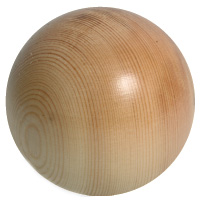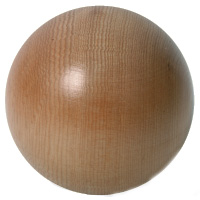Our Timbers

Pine
Pine is an versatile and economical timber and is perfect for staining or painting. It is very lightweight and has a high workability factor, which makes it easier to mould to your desired needs. Pine is usually on the lower end of the cost range when it comes to any type of wood due to how widely available it is, making pine an affordable material. This is partially what makes it so popular for building applications, as you can get a decent amount of it without blowing your budget, and it’s very workable. Pine is normally pale or yellow in colour, and has a striped or wavy grain that can vary from straight lines to swirls, it can also have dark brown knots and streaks. All of our pine is FSC certified.

Hemlock
Hemlock is a knot free timber and comes with a straight grain. It is one of the strong timbers and is a popular choice for a wide range of applications due to its unique properties. It is commonly used for stair parts due to its strength, stiffness, and affordability. The wood is also highly receptive to stains and finishes, which allows it to be customised to suit a variety of design styles and preferences. Hemlock has a pale brown pink colour to it. All of our Hemlock is FSC certified.

Oak
Oak is a classic choice in traditional and modern surroundings. Oak is a hardwood, it is extremely strong, dense and durable and is considered one of the finest and sturdiest materials to work with in woodworking. Oak has a gorgeous light-to-tan-brown colour through to golden-medium brown, and looks great stained or with a clear natural finish to show the timbers characteristics. It has a long history of use around the home dating back to pre-colonial times and remains every bit as popular today. Whilst this makes it a mainstay in traditional design, its versatility means that it can also make a modern piece come to life. All of our Oak except other than that used for handrails and baserails is FSC certified.
Oak Tiger Grain
We call them “Tiger Marks”, Some customers complain to us that they look like “Filler Marks” or “Lacquer Splashes”. They are in fact found on all pieces of oak furniture or stair materials and show that the piece of furniture has been produced from one of the best cuts of Oak from the tree. We have tried to explain below how they are naturally produced and included links to Wikipedia.
Why choose Quarter Sawn Oak?
In order to produce quarter-sawn wood you must cut away from the growth rings at a 90-degree angle. This will produce a vertical uniform grain pattern. Quarter sawn boards will have a grain with straight tight lines running the full length of the board. The better this is done the better the chance for achieving the sought after medullary ray flecks. In addition to being a beautiful piece of wood quarter, sawing increases the structural soundness of the board. They are less likely to twist, warp or cup, holds a better finish and does not allow fluids to penetrate easily.
During the growth phase of the tree the purpose of medullary ray is to transport nutrition between the core of the trunk and the outer parts. The medullary rays are almost an unnoticeable colour in some other wood species. They radiate from the centre of the oak log to the bark, and when the log is quarter sawn, the rays are cut at a very low angle which reveals more of their surface than if the log was slabbed off which in turn increases the chance to getting the famous medullary ray flecks.
There are also some attractive structural benefits to quarter sawn oak. It is about 50% more stable than plain sawn which results in significantly reduced expansion, contraction, twisting, warping and cupping, it holds finishes better and it does not allow liquids to readily pass through it.
Medullary Rays
In botany, Medullary rays refer to a characteristic found in woods. In this context the term refers to radial sheets or ribbons extending vertically through the tree across and perpendicular to the growth rings. Also called pith rays or wood rays, these formations of primarily parenchyma cells allow the radial transmission of sap and are essential in the process of tylosis. In quarter sawn material, where the wood is cut into boards with the growth rings roughly perpendicular to the face of the board, the medullary rays often produce beautiful figure such as silver grain, medullary spots, pith flecks, etc.

Black Walnut
Black walnut is well known for its deep dark look with attractive grain patterns, and high level of hardness. Walnut is a long lasting, dense and strong wood that is highly desired for that luxurious look, it is highly resistant to wear and tear and stains and polishes very well, adding a touch of elegance to any home decor. There can be some variations in colour, but can be corrected with staining. Due to its premium quality, walnut wood is generally more expensive compared to other types of timber. In fact, it’s one of the most luxurious non-exotic woods on the market. All of our Walnut is not FSC certified.

Sapele
Sapele is golden to dark reddish brown in colour and tends to darken with age. It has a fine grain often wavy and has a fine uniform texture to it, and often used as a modern day replacement for Mahogany. There can be some variation in colour, but once stained it brings out a beautiful classic dark period finish. All of our Sapele is not FSC certified.
White Primed
The timber we use for our white primed products is tulip wood. The reason we use this timber is because its smooth and virtually knot free, making it perfect for painting white. All of our white primed products are sold with a base coat already applied, so its perfect for fitting, sanding and adding a final coat making life that little bit easier for our customers. All of our Tulip Wood is FSC certified.

Ash
Ash is a truly underrated wood, with a density and porosity similar to white oak, it’s a real workhorse and is nice to work with. Ash timber is a dense strong and flexible hardwood, thats known for its attractive grain pattern. It is almost completely free from knots and other defects and is a creamy colour, which can be stained and polished to a very good finish.
Looking After Your Staircase Or Stairparts
Overtime dust and dirt can accumulate on your staircase and stair parts, so it important to dust or wipe with a damp cloth all over the timber parts to help to keep it all looking brand new. Any spillages should be cleaned up immediately, and if your staircase has been stained be careful using a damp cloth as it can remove the stain over time.
Protecting Your New Staircase Or Stair Parts
After your new feature staircase has been delivered and installed and it looks great, but there is still one stage to go through before it can be called finished. You cannot leave the timber untreated as the open grain will accept all the moisture, dust and dirt that is trodden into it and will absorb any moisture from plastering etc. grease marks and stains from spills. In a very short period of time, regardless of the quality of the wood, your new staircase will look worse for wear and if it is not treated some of the damage will be permanent. The solution is quite simple the timber has to be treated with a protective material, varnish, lacquer or paint, even if you are not ready for the final finish a base coat will protect your wood until you are read for the final finish.
